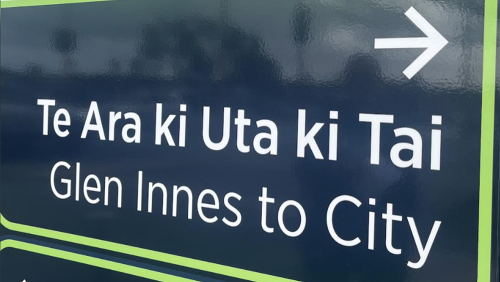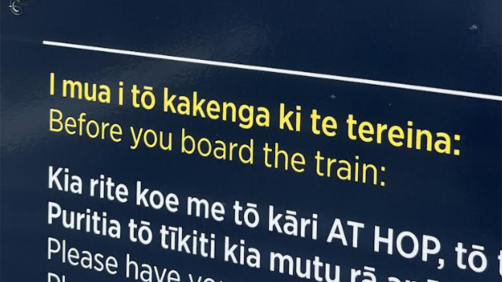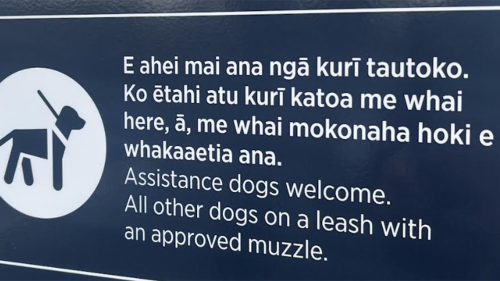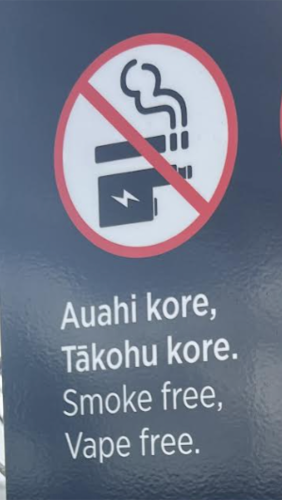On bilingual buses and trains, we’re all learning te reo Māori
While catching a few trains and buses in Tāmaki Makaurau recently, it became an educational experience and a mini-celebration of te reo Māori.
For the uninitiated, Auckland Transport (AT) has bilingual announcements on their services. We’ve been impressed at how this simple step can introduce millions of passengers to the sounds of te reo Māori. They’re a learning opportunity, they familiarise us all with the sounds of the language, some new vocabulary, and the correct pronunciation of Māori place names in the city.
 |
 |
Wayfinding and other signs are written bilingually.
How it works
With our AT HOP card at hand, we travelled on public transport around the west and south of Tāmaki Makaurau. On local buses and trains, announcements are made consistently in both Māori and English, such as naming the next bus stop, or the name of the next train station. They also announce bus and train connections at upcoming stations, and places of interest. We love that all of this information is presented in te reo as well as in English!
We appreciate the work that AT has put into this kaupapa, because like many mahi reo, it’s important for kupu to be consistent and tika. We made a short list of words that we heard, a vocab list that we can all add to our kete reo:
- ara keremu – lane
- huarahi – road
- tiriti – street
- ara hāngai – avenue
- papa rēhia – field
- tauranga tereina – train station
- Te Ara Āwhio o Māhunga – Māhunga Drive
Bilingual services are great for the community
Hearing te reo Māori is now a normal part of the daily commute for thousands of ākonga, whānau and workers. At a minimum, the announcements are helping commuters to understand the sounds and the flow of te reo Māori.
The voices of the two announcers are easy on the ear and complementary. It’s encouraging to hear the reo speaker followed by the English speaker who models great pronunciation of Māori names like Manurewa, Aotea and Māngere.
This initiative also shows that AT values language, in this case, te reo Māori, the indigenous language of Aotearoa. It helps to normalise te reo in public life by becoming a regular part of our daily routine. For speakers of te reo Māori, especially users of public transport, this is a small and valuable affirmation.
There’s lots to learn if you’re interested in local Māori history. Who knew that the name for the stream in the city was Waihorotiu, that Ōwairaka has two Māori names, or that Maungawhau was Mount Eden? And for language enthusiasts there are sentence structures to learn like "whakawhitingia mai ki konei mō" "transfer here for" – it just takes a little attention and concentration.
 |
 |
Notice how the font size is the same and te reo Māori is written first. Readers will automatically focus on the words in the language they understand.
At Tātai Aho Rau, we also value te reo Māori. To further your own language journey, why not explore our foundational Māori language programme – Whiria te Reo? It’s a self-paced course designed for people to learn at their own pace.
See short videos by Auckland Transport about other station names here.
Whiria te Reo
Learn te reo Māori with our flexible, self-paced course.

